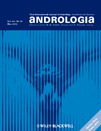In vitro initiated sperm forward motility in caput spermatozoa: weak and transient
Summary
Testicular spermatozoa during journey through epididymis acquire forward motility, which is essential for fertility. To understand the biochemistry of sperm motility initiation, various initiation media have been developed that permitted high level of motility induction (55–60%) in the immature caput-spermatozoa in presence of activating principles: theophylline, bicarbonate and epididymal plasma (EP) when analysed microscopically. Here, we show for the first time using caprine model that stability and quality of in vitro-induced motility in the caput spermatozoa is insignificant in contrast to naturally induced motility in mature cauda spermatozoa. In vitro-induced motility of the immature spermatozoa was lost completely upon the removal of these activators by centrifugation. Selective withdrawal of either EP or HCO3 by dilution retains 50–60% of the in vitro-induced motility. Spectrophotometric analysis revealed that in vitro-induced vertical motility in immature spermatozoa is too little when compared to mature spermatozoa. In in vitro-initiated caput spermatozoa, cyclic adenosine monophosphate level becomes doubled but lesser than cauda spermatozoa. This revelation concludes that scientific knowledge generated over the years on the basis of in vitro initiation method is insignificant and needs improvisation to delineate biochemical regulation of sperm motility which in turn has remarkable potential in wide biological fields, especially in infertility treatment.




